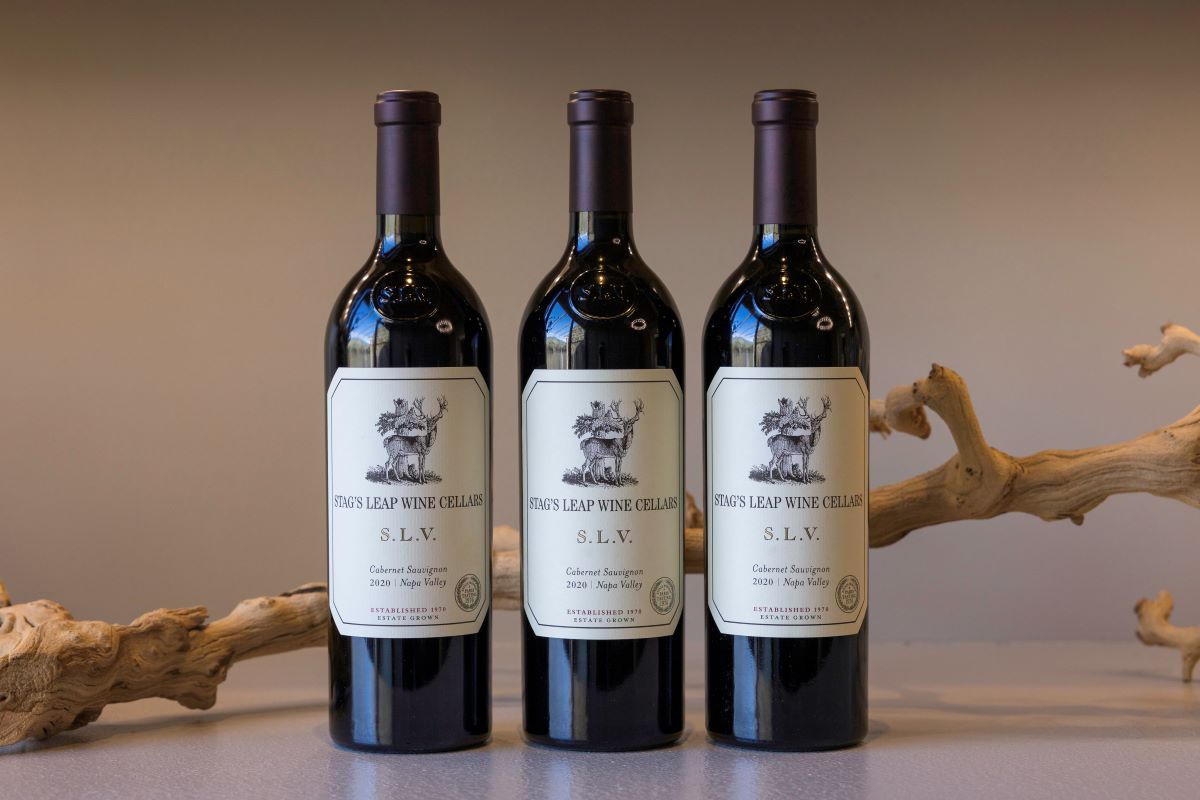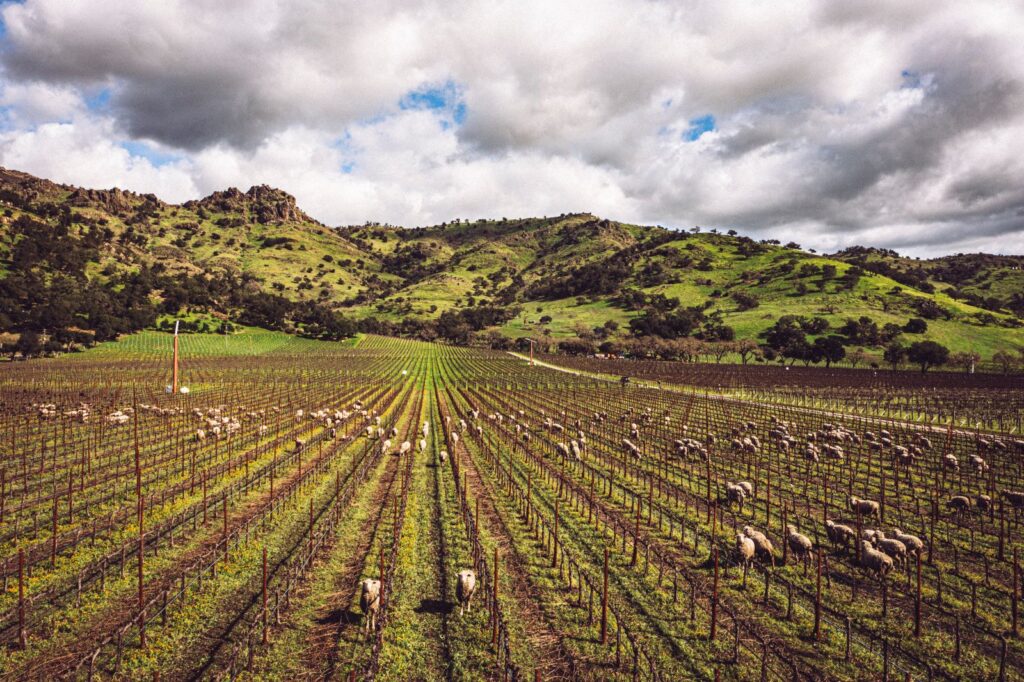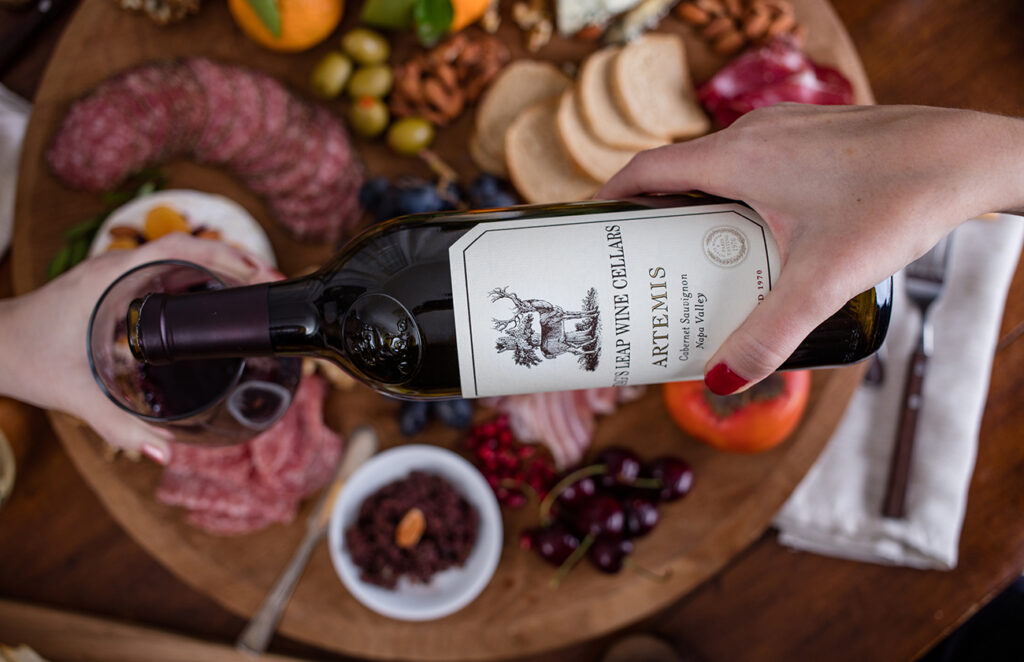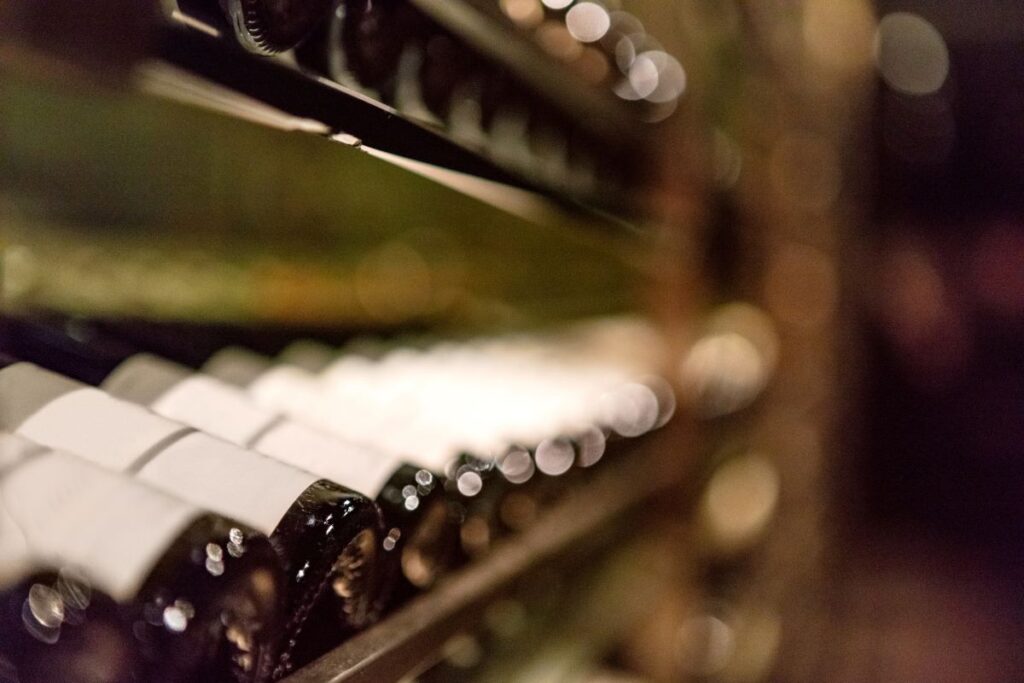
What is the Rule of Three?
Part of the magic and mysticism of wine is the evolution within the bottle over time. When you sip a wine upon release, you’re seeing only part of the story. So how do you fully experience what a wine has to offer over the course of its life? Head winemaker Marcus Notaro has the solution: simply purchase the same wine in three-bottle increments – 3 bottles, 6 bottles, 12 bottles and so on – so you can enjoy its development over time.
One of Marcus’s core tenets: wines do not need to be undrinkable in their youth in order to have great potential for aging. All Stag’s Leap Wine Cellars wines, like our S.L.V. Estate Cabernet Sauvignon, are crafted with this approach. High-quality wines have stamina, and you can enjoy different experiences with them at different times of their life stage. Here’s a timeline he suggests for each of those bottles, assuming the wines you purchased are current vintage.
Wine Bottle One: Enjoy Immediately
The first bottle of the three you purchase should be enjoyed immediately. Maybe you just returned from a trip to Napa Valley and you want to share your discoveries with friends and family. It’s the perfect time to enjoy the wine’s youthfulness and vibrancy. Young wines are generally more expressive and fruit-forward with plusher tannins and richness. And this gives you a vision into the wine’s personality, as well as the vision the winemaker had when crafting the wine.
Wine Bottle Two: Enjoy in a Few Years
Bottle two should be added to your cellar and opened seven or eight years after the vintage date. For example, if you purchased our 2020 S.L.V. Estate Cabernet Sauvignon, plan to open and enjoy the wine again in 2027 or 2028. At that point, the wine is still youthful and shows the fresh fruit characteristics of a young wine, but any tannic edges you might see in a young wine will be somewhat softened on the palate. It will still be a very flavorful wine loaded with complexity. That’s what Marcus loves about trying a wine at this age: it’s still young, it’s still fresh, but there are different flavor evolutions happening.
Wine Bottle Three: Enjoy in a Couple Decades
The third bottle is for the very back of the cellar. Stash it away and forget about it for a while! You will want to save that bottle and bring it out for a special occasion 20, 25, or 30-plus years past the vintage date. Maybe it’s a retirement dinner, college graduation, or your child’s 21st birthday. With wines that have decades of age, you’re going to have wonderful complexity, particularly in the aromatics. You’ll experience some flavors of fruit, but also other characteristics such as tertiary notes of leather, earth, tobacco, and cigar box.
The wines at Stag’s Leap Wine Cellars can go the distance. And Marcus feels a deep responsibility to craft wine that provides a special experience and a special memory to go with that very special occasion, whether you’re opening a bottle now, in a few years, or in a few decades.
acquire three s.l.v. cabernet sauvignon wines
The Importance of Decanting
Decanting wine is like unlocking a hidden treasure within each bottle; it helps reveal its true character and essence. Whether you’re preparing a library vintage with aged sophistication or uncorking a vibrant new release, understanding the art of decanting can significantly enhance your wine experience.
Before delving into the intricacies of decanting, it’s essential to grasp its fundamental purposes. Decanting serves two primary functions: 1) to separate sediment that has naturally formed over time in older wines and 2) to aerate younger wines, allowing aromas and flavors to flourish upon serving. As you pour wine into a decanter, it’s rapidly exposed to oxygen, unlocking desirable aromas and flavors that epitomize the unique qualities derived from our terroir.
Proper decanting technique is crucial for maximizing the potential of your wine. Whether you’re handling a library vintage (Bottle #3) or a current release (Bottle #1), the process requires patience and precision. For older wines, such as those from The Legacy Cellar, allowing the bottle to sit upright for at least 24 hours before opening is paramount to ensure sediment settles at the bottom. When decanting, pour the wine slowly and steadily into the decanter, avoiding sudden splashes that could accelerate aeration, potentially harming delicate flavors in older vintages. It’s a delicate dance of finesse and restraint. We recommend decanting older wines right before serving, as you may miss out on the wine’s evolution if you decant too early.
Younger wines, on the other hand, can endure more vigor. Unlike an older wine, your goal is to introduce oxygen to the younger wine to “wake up” the wines flavors and aromas. Depending on the wine, you can decant up to one or two hours before you plan to serve.
Selecting the right decanter is akin to choosing the perfect vessel to showcase a work of art. Decanters come in various shapes and sizes. For younger wines craving a breath of fresh air, opt for a decanter with ample surface area to facilitate aeration. Full-bodied reds like our current vintage S.L.V. Estate Cabernet Sauvignon thrives in decanters with wider necks and bases, allowing the wine to unfurl its complex bouquet. Conversely, lighter-bodied reds and older wines prefer decanters with smaller bases, ensuring a gentler aeration process. Remember, simplicity reigns supreme when selecting a decanter, as ornate decorations may obscure your view of the wine and complicate cleaning. We believe that every detail, from the decanter to the final pour, contributes to an unforgettable wine experience.
In the world of fine wines, decanting is not merely a ritual; it’s a journey of discovery, a celebration of craftsmanship, and a testament to the transformative power of time and terroir. Whether you’re savoring a meticulously aged library vintage or indulging in a youthful release bursting with vitality, decanting unlocks the full potential of each bottle and invites you to embark on a sensory adventure like no other. So raise your glass, savor the moment, and let the symphony of flavors and aromas transport you back to the splendid beauty that is Stag’s Leap Wine Cellars and Napa Valley.
About S.L.V.
S.L.V., also known as Stag’s Leap Vineyard, was our first vineyard planted in 1970. The vineyard is home to 35 acres of Cabernet Sauvignon and 1.5 acres of Cabernet Franc and is composed of predominantly volcanic soils with healthy drainage. This vineyard achieved global fame when the 1973 S.L.V. Estate Cabernet Sauvignon triumphed over First- and Second-Growth Bordeaux wines in the 1976 Judgment of Paris blind tasting. This historic Napa Valley vineyard continues to produce wines with complex black fruit and berry character, spicy intensity and excellent structure. Wines from S.L.V. are crafted to be enjoyed upon release, but also promise long life and an exceptional ability to age.




